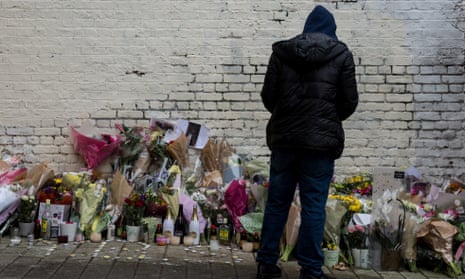Young people aren’t radicalised by YouTube videos. Young would-be jihadists don’t decide to blow themselves up just because of online exchanges with recruiters, young white supremacists don’t just go out on mass shootings because of the Facebook groups they belong to, and young black men don’t just go out and stab each other because of drill music videos.
And this might sound obvious, but it’s worth saying: in most cases it’s more complicated than that. There’s often a context where people feel angry, have few opportunities, feel their lives have little value or few believable promises for the future. I’ve written before about how young people are struggling in comparison to older generations thanks to a lack of jobs and an expensive housing market, and cuts to youth services, lack of mental health provisions and rising inequality are all contributing factors to the current spate in youth violence.
It’s not easy to solve these problems – or at least not as easy as YouTube deleting a few dozen music videos, which is what happened this week at the request of the Metropolitan police, following a frenetic chicken-and-egg debate about drill music and violence in the UK in recent months.
It’s not difficult to see the link between violence and drill music. The genre, imported from Chicago, undoubtedly reflects the ongoing crisis that has seen at least 37 people fatally stabbed, and 62 overall killed in London alone since the beginning of the year. Others have written about the parallels between the current discussion of drill music and moral panics over gangsta rap, aggressive metal with explicit lyrics and other genres that have been demonised or labelled a bad influence. But many artists in the scene or those who affected by the rising violence will acknowledge that the bravado and threats in drill music can very easily be translated into real-life violence.
When I covered the murder of Myron Yarde in 2016 it was clear that his relationship with music contributed to the circumstances of his death. When his friend Showkey, who he made music with, was also killed a few months later, it felt as if even though music is often seen as the only viable escape for some young people, it is sometimes tied into very real risks.
And it’s not all drill artists. Performers such as Abracadabra or 67, both of whom performed at the Southbank Centre last year, generally produce slickly produced music videos showed on online music platforms. It’s the more amateur videos by younger, aspiring rappers that cause more concern. Videos of young men ballied up (wearing balaclavas or masks) and sending for “opps” (enemies or targets) are popular with a young audience hungry for rawness and realness, albeit served alongside specific threats of violence. So, yes, these videos are worrying, but they don’t just happen in a vacuum, they are a sad depiction of the reality of life for many young people.
While such a headline-grabbing approach may allow the Met to say that it is taking action, among a culture that holds a deep distrust of the police a deleted video could be seen as a badge of honour. If the objective of some of these videos is to project a threatening image, being censored by the police isn’t exactly a deterrent. As I write, news channels are showing clips of drill videos along with their reports about this very story. It’s almost like free advertising.
Banning these videos could inadvertently push this underground culture even deeper. YouTube may have taken action but how do you police something that manifests itself on Snapchat, Instagram and pretty much every other form of social media? Is our time and resource not better directed towards the real issues that underlie all of this?
The World Health Organisation offers a cocktail of contributing factors which lead to youth violence on a global level, all of which I’d argue deserve more urgent attention than music videos. Take “low commitment to school and school failure” or attention deficit, hyperactivity or other behavioural disorders. The number of secondary school exclusions has dramatically increased over the past year, and an increasing focus on exam results means “problem students” are not given the support that they need.
At the end of last year, Amanda Spielman, the chief inspector of schools, condemned the practice of excluding vulnerable or difficult children as a way of preserving good performance results, a trend known as “off-rolling”. She described it as “an invidious example of where schools have lost sight of the purpose of education”. She also said that, “If, through a poor education, we close down other avenues they have for success, we are setting the pathway for a life of crime. Without access to proper, decent learning and training we are passing de facto life sentences on young offenders.”
Met Police commander Duncan Ball said in 2016 that many of the underlying drivers of serious youth violence are the kinds of issues “we will probably be talking about in 30 or 40 years’ time”. It’s these issues – which require serious policy change – that we should be concentrating on. I sincerely doubt that we’ll be debating the influence and effects of drill music in three decades.

